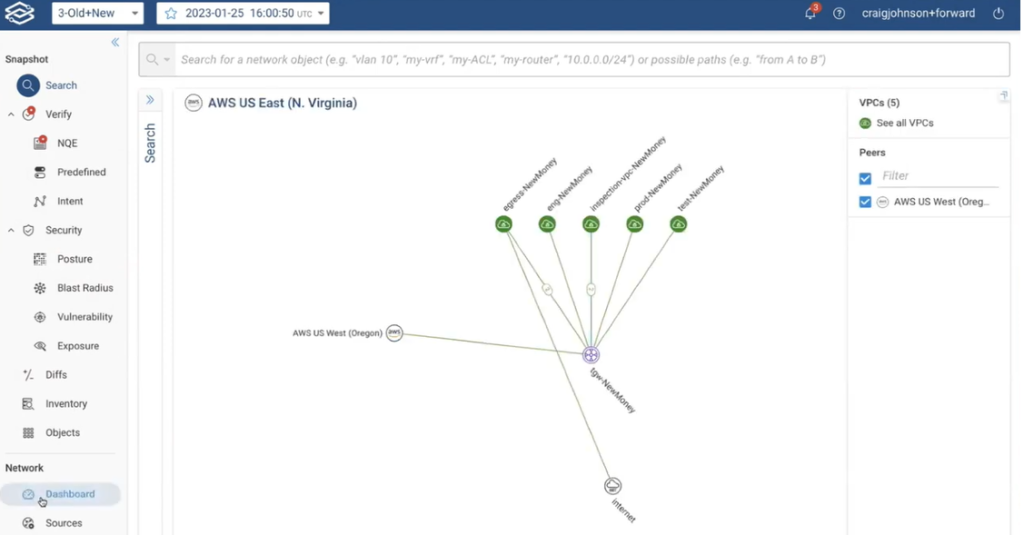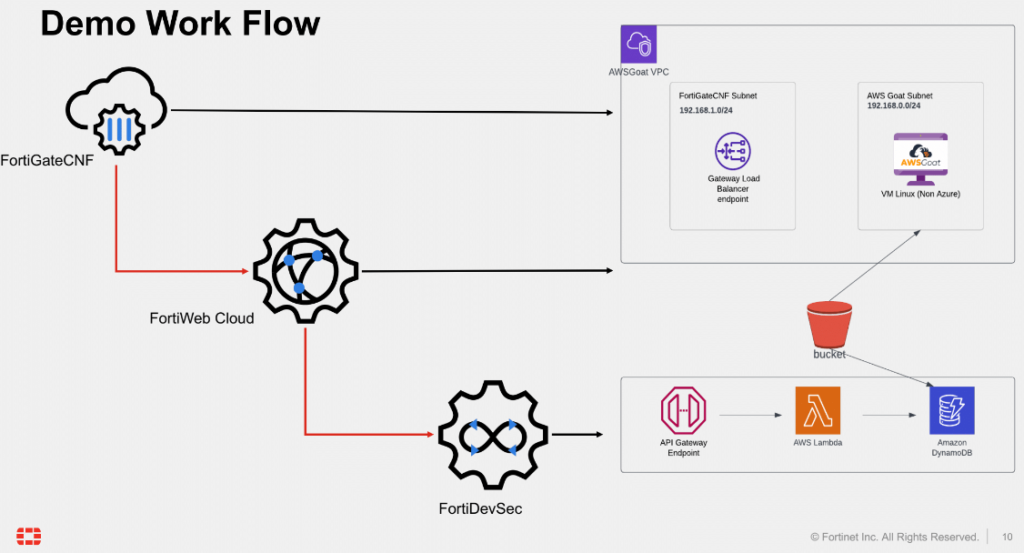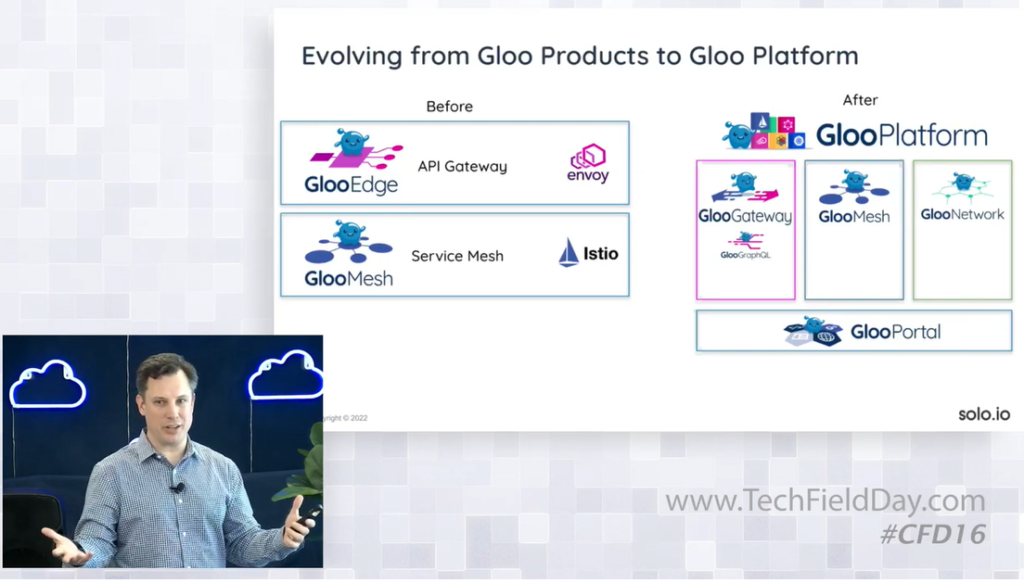
I participated as a delegate for Cloud Field Day 16 on Jan 25, 2023. This was a hybrid event that took place at the Forward Networks office in Santa Clara, CA. For those unfamiliar with Cloud Field Day, you can learn more about all of the Field Day events over at TechFieldDay.com. Cloud Field Day 16 consisted of presentations from Forward Networks, Fortinet and Solo.io that were live streamed on various platforms with social media interaction via #CFD16.
It is rare that I run into customers who don’t operate some type of hybrid cloud network. Whether this includes an on-prem environment or is largely multi-cloud, it has been apparent for some time that cloud networking is both very complex and extremely prevalent in enterprise IT. Networking is also one of the first technical hurdles many organizations face when expanding into the cloud. The ability for workloads to communicate in a secure and optimal fashion typically must be in place before an environment can be production ready. Cloud Field Day presented a first-hand look at some very interesting products that help customers address challenges that cloud brings from a networking perspective.
Forward Networks
Forward Networks invited the CFD crew into their Santa Clara office for the day. Having all those people and gear as guests in your space is no small feat; but they were gracious hosts and made all of us feel at home. They also started off our day by presenting their Digital Twin product to us. Some of the other delegates had mentioned excitement around this product, and I was interested to learn that the Forward Networks Digital Twin brings a virtual representation of network systems to the market.
This was my introduction to the term Digital Twin, which is meant to give an overview of the current state of some type of system. Sure we have network diagrams, but those are point in time representations of something that I’d argue is more expected (at best) than exact current state.
My initial impression was that this type of product is similar to something like an application discovery tool in that it probably takes a lot of work to ensure access to every device on a network and could cause security teams to stop a deployment in its tracks. The more I thought about it though, I could see a ton of value not just for network admins, but for security, compliance, finance, and a whole other host of possibilities.
Forward Networks Digital Twin isn’t used to build something for you or to run your workload. It is a way to get an actual representation of your hybrid cloud network environment. This may not bring immediate ROI, but is a really powerful way to monitor and manage a highly complex environment that most key areas of a business are probably highly dependent on. With the amount of churn in IT, it can help new network or cloud engineers to quickly get familiar with an enterprise network. It can help to remedy issues in an environment, and it can more easily ensure regulatory compliance. It would be nice to also see integration with IaC and CI/CD to easily inject recommendations or fixes into an environment.
There are many possibilities for network Digital Twins, and I feel like the true value could be seen by a customer who is willing to bring together different silos and find the largest number of use cases to buy into across the organization. It may not be valuable for SMBs or less complex environments, but I can see how a product like Forward Networks Digital Twin may be necessary to effectively maintain hybrid cloud networks.
Fortinet
Fortinet demoed a few different products across different levels of security in the form of red team / blue team hack sessions. The first session was focused on FortiGate Cloud Network Firewall, which is a next gen firewall service with enterprise grade protection meant to simplify management and operations. FortiGateCNF also currently has cloud native integrations with AWS Gateway Load Balancer and AWS Firewall Manager. While the red team was initially able to gain access to the EC2 instance running in the demo work flow shown below, the blue team was able to operationalize FortiGateCNF to block this access without interacting directly with AWS.
FortiWeb Cloud is a SaaS web firewall offering available across all major cloud marketplaces. FortiWeb Cloud can perform web application and bot security, has built-in machine learning and even CDN capabilities. FortiDevSec is a tool that is easily integrated into CI/CD pipelines to bring an additional security layer to the application deployment process. The red Fortinet team was always initially able to compromise a system, but the blue Fortinet team used all of these tools to show how powerful they can be to mitigate security issues at many different levels of the cloud application stack.
One interesting story for vendors that are traditionally known from the data center space is how well their reputations transition to cloud. Fortinet seems to be very focused on bringing enterprise grade security products that are built to solve real world cloud problems. This was evident in how the demos played out in the room. All the examples were realistic scenarios that highlighted the agility each Fortinet product provided in being capable of mitigating threats.
I can see Fortinet being successful in the cloud because of their portfolio of products that are easy to consume and protect across all levels of a hybrid cloud infrastructure. The challenge will getting the Fortinet name be near the top of cloud native networking and security discussions. I believe that bringing the Fortinet Security Fabric portfolio of products together somehow into one suite could help with that, but maybe hybrid cloud doesn’t really lend itself well to that? Regardless, I’m looking forward to seeing how Fortinet will continue to expand in the cloud networking and security space.
Solo.io
The final presentation was from Solo.io, who discussed their GlooPlatform for modern application networking. They started off the presentation with a couple of customer examples to highlight the scale at which Solo.io products were used to solve pandemic related challenges . We then got a bit of a history about how their initial products, GlooMesh and GlooEdge, have transformed into the newer GlooPlatform.
As Kubernetes has matured, customers are looking beyond the basics of how to deploy k8s clusters and run containerized applications. Enterprises have become more comfortable employing k8s as part of their critical infrastructure, so networking and security have become a top priority. Solo.io has taken the open source front-runners in Envoy and Istio and baked them into a common GlooPlatform control and data plane. They also introduced Istio Ambient Service Mesh, a new sidecar-less data plane that will hopefully be released later in 2023.
While the previous vendors have products that are focused on hybrid cloud, Solo.io brings a cloud native, application centric point of view to networking. They spent a good bit of time breaking down the specifics of application networking and the considerations are required to account for so that application services can communicate with each other.
The Solo.io team is comprised of a large group of people involved with Istio and Envoy community leadership, which brings a ton of credibility to the Solo.io product set. They also provide free access to the Solo Academy so that people can take hands-on workshops and learn cloud native technologies.
As more enterprises shift towards cloud and more IT teams come along with them, traditional data center vendors are gaining traction in the cloud. Cloud native tools still have a crazy large CNCF ecosystem to compete with as organizations begin to find new and modern ways to bring their products to market. It will be interesting to see which vendors rise to the top of this crowded field and prove their value when it comes to cloud application networking. Solo.io seems to have the product set and the market credibility to continue as a leader in this space.
virtualBonzo’s Take
Cloud Field day was a great way to focus on the state of cloud networking as we head into 2023. It was also awesome to be back in a room filled with great people and interesting technology that inspires me for the year ahead in IT. Cloud is still super complex, and there is an ocean of possibilities for tools that can help customers to be more efficient, agile and secure.
Watch the Cloud Field Day YouTube playlist posted above for the full, in-depth presentations from Forward Networks, Fortinet and Solo.io.




